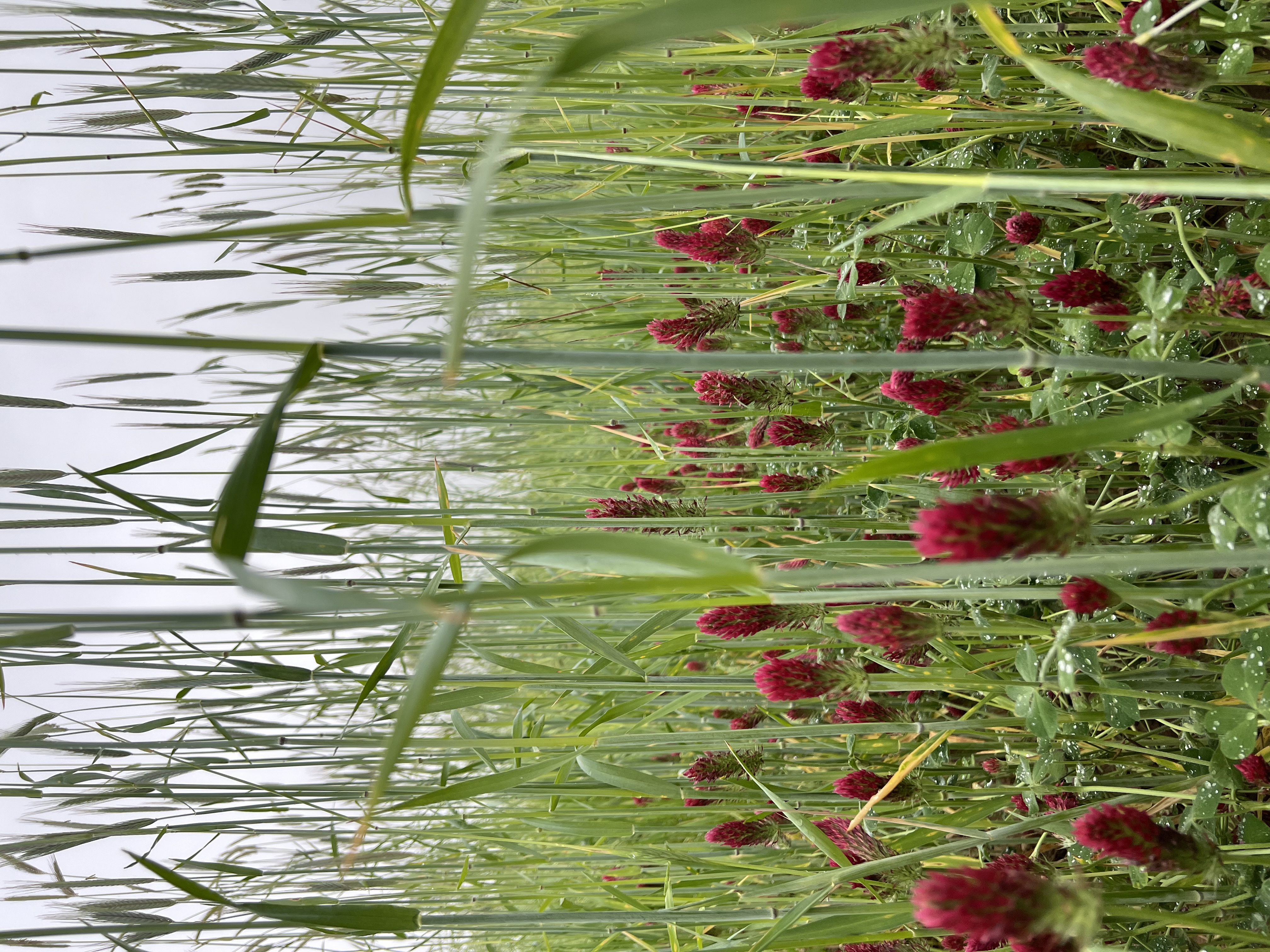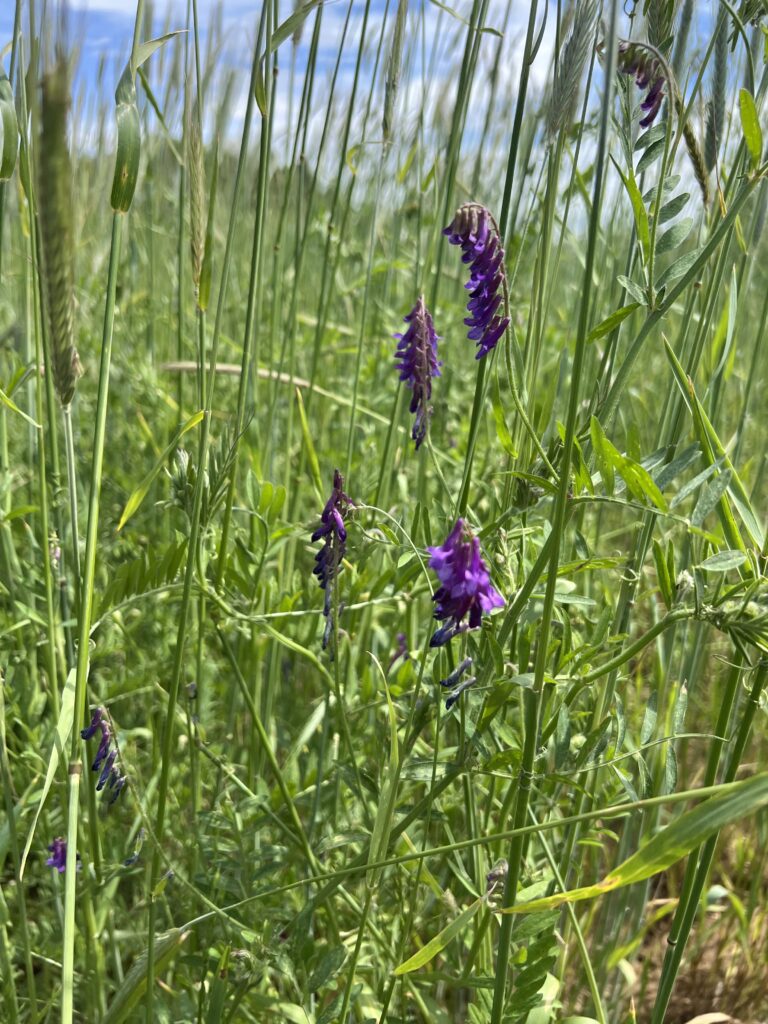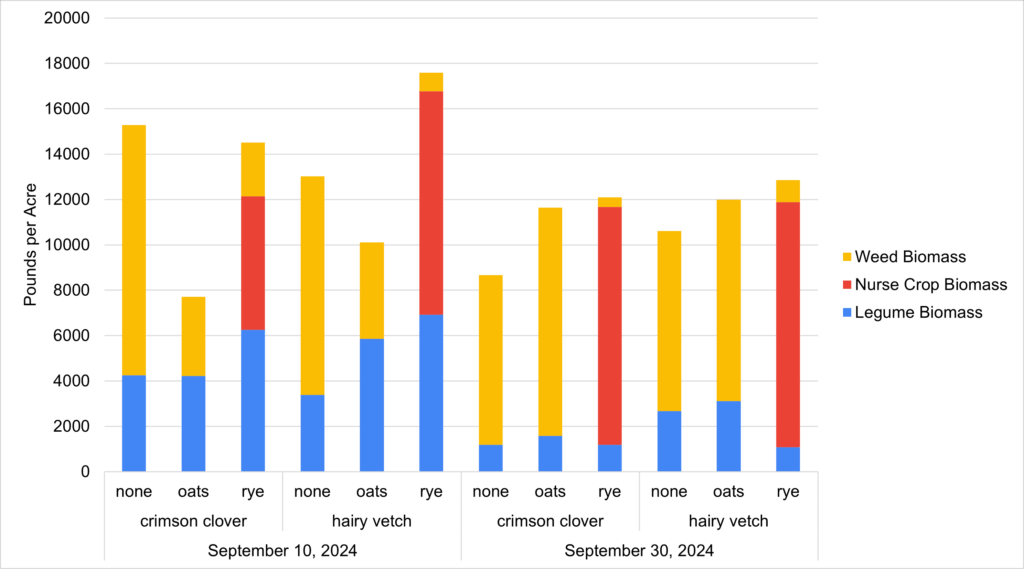Main Content

Background Information
Cover crops are primarily grown to protect and promote soil health; they prevent soil erosion, retain or add nutrients to the soil, provide living roots to support soil biodiversity, and serve as a source of organic matter. Cover crops can also enhance weed management and play a role in pest and disease management.
Cover crop species vary in their life cycle, adaptability, and efficacy for each of these goals. Multi-species cover crop mixes are commonly planted to capitalize on functional differences and synergism among species. For example, cereal grains like winter rye or oats are often planted as a “nurse crop” with other species because they establish quickly and can provide a better environment for establishment and growth of the other species (Figures 1 and 2).

Methods and Results
On Sept. 10 and Sept. 30, 2024, four legume cover crops (balansa clover, crimson clover, hairy vetch, winter pea) were seeded with or without a nurse crop (oats, cereal rye, none) to evaluate legume winter survival, spring biomass production, and nitrogen contribution. The study was conducted at the Rutgers Snyder Research and Extension Farm in Pittstown, NJ. Cover crop and weed biomass were harvested in mid-May during flowering of all overwintering species. Among the legumes, crimson clover and hairy vetch overwintered well. On average, the crimson clover yielded 4,900 lb./A dry matter and hairy vetch yielded 5,400 lb./A dry matter (Figure 3). Poor establishment and survival of balansa clover and winter pea was likely exacerbated by drought conditions in fall 2024.
Planting at the optimal time – 6 weeks before the first expected frost – and pairing with cereal rye maximized yield of legumes. In these instances, dry matter production was 6,200 lb./A for crimson clover and 6,900 lb./A dry matter for hairy vetch. Dry matter production for cereal rye was 5,900 lb./A and 9,800 lb./A when paired with crimson clover and hairy vetch, respectively. The combination of early planting paired with cereal rye nurse crop significantly reduced weed biomass, primarily composed of winter annuals. Oats did not overwinter and, although they had a similar effect as cereal rye on legume biomass production and weed suppression at the early planting date, they were not as beneficial (Figure 3).

As expected, legume biomass was significantly reduced at the later planting date. Dry matter production for crimson clover and hairy vetch averaged 1,300 lb./A and 2,200 lb./A, respectively. Unlike the early planting date, cereal rye reduced (hairy vetch) or had no impact (crimson clover) on legume biomass. Oats, however, increased both legume and weed biomass compared to where there was no nurse crop or where cereal rye was the seeded (Figure 3).
Planting a multi-species cover crop mix can increase biomass production and enhance secondary benefits like weed suppression, especially when the cover crop planting date is optimized. This study was replicated across the region with colleagues on the Northeast Cover Crops Council. Nitrogen contribution data will be shared when it is available.
| Species | Variety | Seeding Rate (lb./A) |
| Crimson Clover | ‘Dixie’ | 20 |
| Balansa Clover | ‘Viper’ | 8 |
| Hairy Vetch | ‘Patagonia’ | 20 |
| Winter Pea | ‘Keystone’ | 40 |
| Cereal Rye | ‘Danko’ | 30 |
| Oats | ‘Reeves’ | 30 |